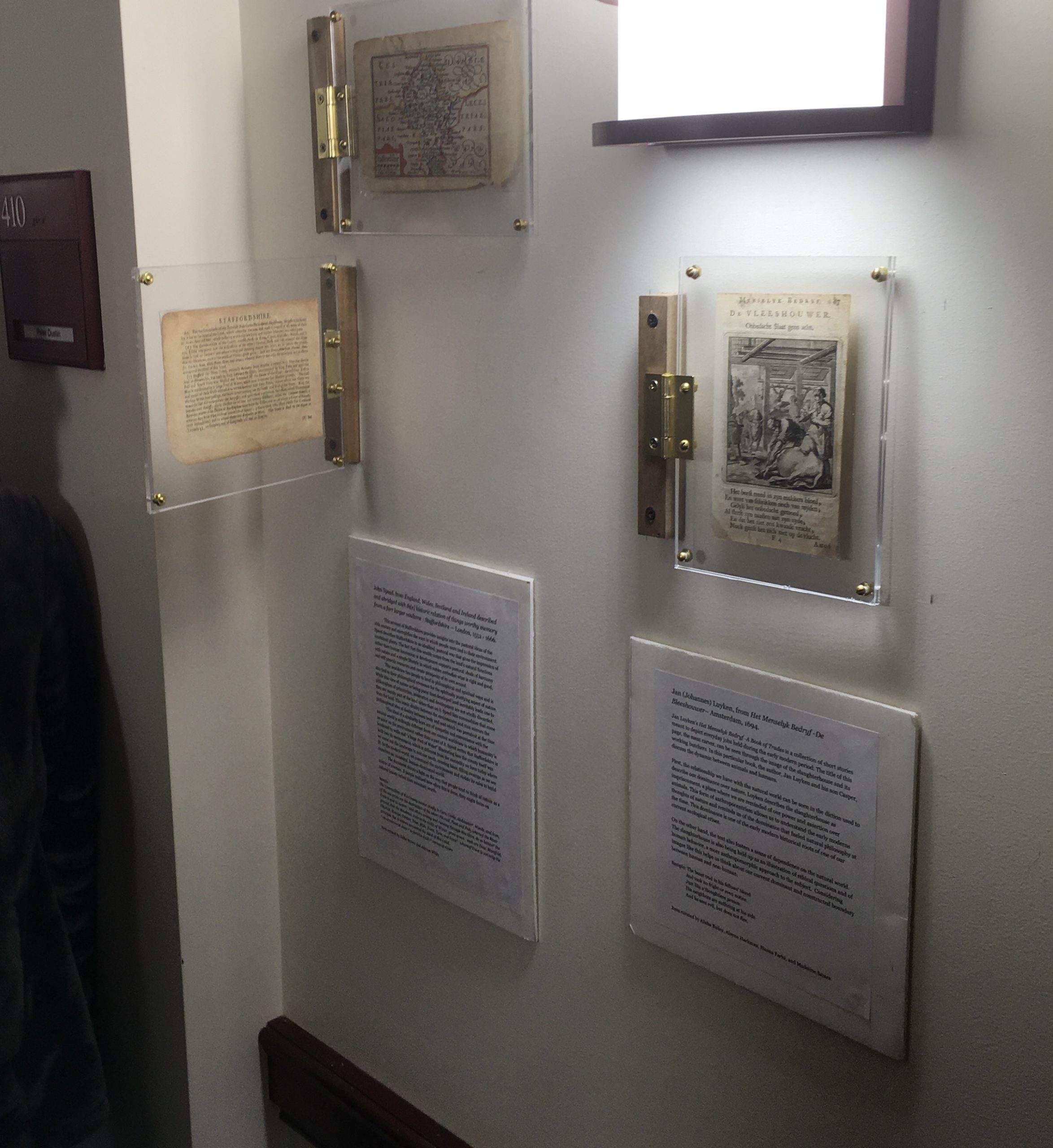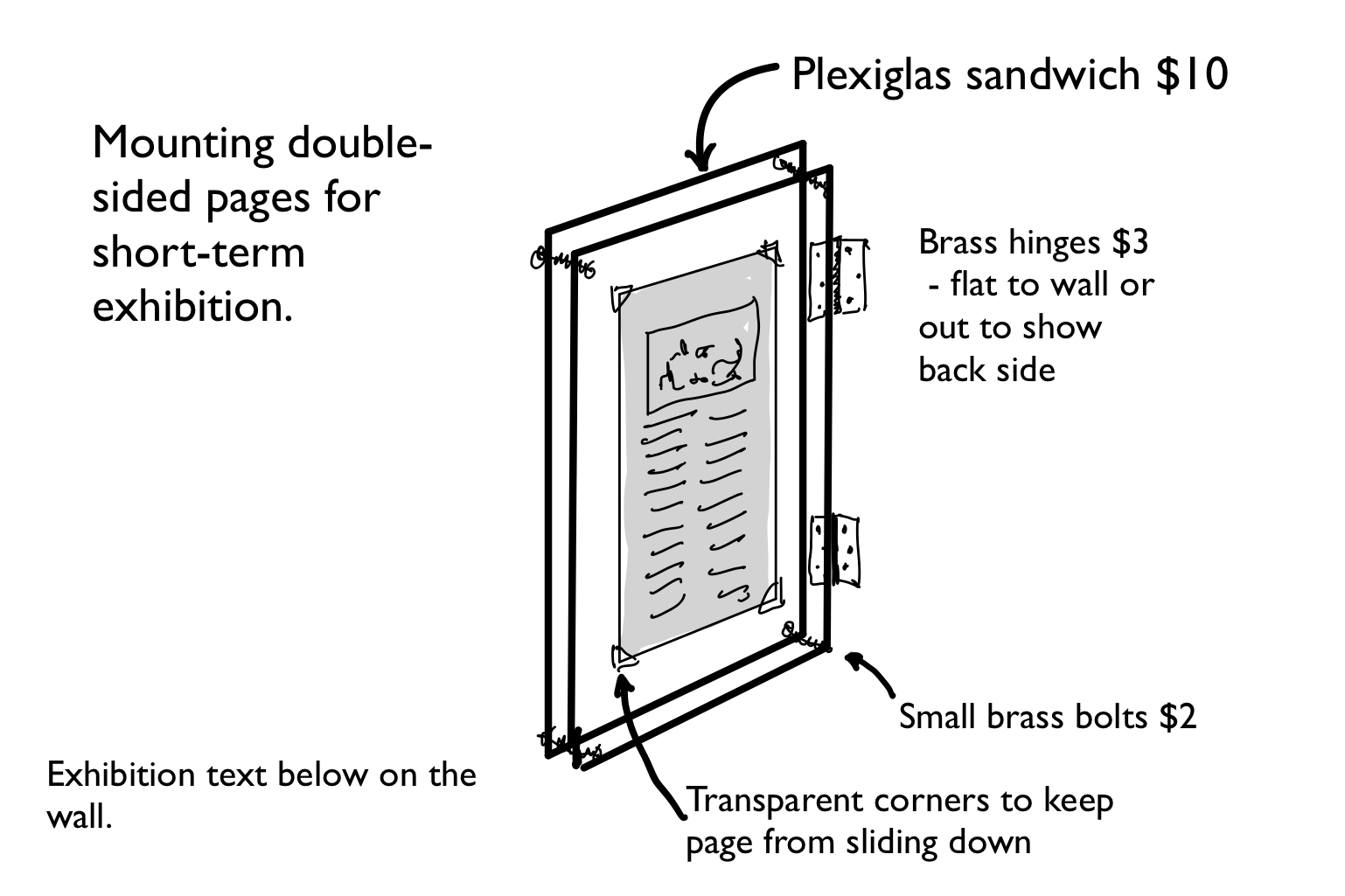Exhibitions offer excellent opportunities for undergraduate research especially at the introductory level. But finding appropriate materials to exhibit can be daunting, requiring collaboration with libraries or museums. In addition, established collections are often well studied, leaving a little room for authentic research by undergraduate students. One solution is to acquire items specifically for the purpose of an undergraduate exhibition. A treasure trove of inexpensive minor items, early printed pages, and more modern ephemera is available on auction sites like eBay. With patience and careful attention to ethical issues, it’s possible to assemble and mount an exhibition in your field for less than $500. And the items acquired can remain as part of a college or university’s teaching collection long after the exhibition is over, preserving public access to materials that might otherwise have languished in private collections. Here are some rules of thumb to guide your adventure.

Be flexible.
All exhibitions have a theme or focus, and your expertise will no doubt suggest many ideal items to you. But you will have most success if you bring a flexible and open-minded approach to your search. Items produced in large numbers, or in metal, and pages from large and popular texts are easiest to find and present the fewest ethical issues. (See “Pay Attention to Ethics!” below). Small metal finds from the European Middle Ages include lead pilgrim badges, cloth seals, and seal matrices; from the early modern period, you’ll find Delft tiles; bronze book clasps, and pages from popular works of natural philosophy.  Happily, pages that offer the most opportunity for student research, with text as well as images, are usually less expensive than ones with images alone. Modern ephemera include local newspapers, family photo collections and scrapbooks, posters, campaign materials, etc.
Happily, pages that offer the most opportunity for student research, with text as well as images, are usually less expensive than ones with images alone. Modern ephemera include local newspapers, family photo collections and scrapbooks, posters, campaign materials, etc.
Trust your expertise?
Museums care deeply about provenance and authenticity. In part, that is because they are collecting items of great value, where forgery becomes an issue. At the cost point for undergraduate exhibitions, your ordinary scholarly expertise is enough to point you in the right direction. For example, while it is possible for someone to forge a page from Gerard’s Herball (1597), the cost and trouble to do so at the level that would deceive any early modern scholar would not be worth the $6 that such pages often garner. If you’ve spent hours in the archives, you are unlikely to mistake a facsimile for the real thing. Overall, you don’t need to be an art expert in order to demonstrate the level of expertise required for a low-cost undergraduate exhibition. A good rule of thumb is that if you doubt the authenticity, then others will too.

Pay attention to ethical issues!
As anyone involved with museum acquisitions knows, purchasing an artifact always involves a delicate ethical balance. If you use items you acquire in teaching and make them available to the public, you have some strong positive outcomes. But you should take care to minimize the harm caused by participating in the marketplace. The issue is particularly tricky with anything that counts as an antiquity. The Society for American Archaeology’s code of ethics generally forbids participation in the market for antiquities because it creates incentives for looting. If you’re a purist, you may extend this even to existing private collections and to objects that have always been extant. Raising the ethical issues can also be a legitimate part of the pedagogy of your undergraduate research experience.
- Consider both the cost of the item and its origin. A low cost may seem unlikely to encourage irresponsible behavior. But for items from developing countries, prices that may seem low to you can still be incentives to loot. Some countries, however, strictly monitor (and permit) the collection of minor objects. In the UK, for example, metal detector finds are documented in a public database, and the Treasure Act and national monument laws protect cultural heritage.
- Avoid beauty. Prefer damaged, broken, and incomplete minor items. Objects and texts that are perfect or aesthetically pleasing are important cultural heritage, if authentic. Broken pottery fragments might be OK (but no guarantees). The frieze of the Parthenon is not.
- For pages from texts, consider the cost of the page against the value of a complete text. You can usually check this using records from sites like abebooks or auction sites. Don’t buy individual pages for a price that might encourage collectors to destroy undamaged books.
- Do not acquire items from indigenous cultures or their ancestors.
Save some of your budget to mount your exhibition.
Creating secure and attractive exhibitions requires some thought to presentation, and that comes with its own costs. Individual pages can be mounted using swing-out plexiglas with nothing more than some brass hardware, a hand drill, and a screwdriver. (NB: Consider UV resistant plexiglas for long-term or sunlit installations). Three dimensional items might require collaborating with someone who has basic carpentry skills. The low cost nature of your items should make you less anxious about theft or vandalism and thus open up more potential semi-protected exhibition spaces.

Consider future teaching uses.
Exhibitions offer great course-based undergraduate research experiences, but consider collections that can be used in teaching long after the exhibition is taken down. Simple classroom assignments can motivate students when they have the chance to handle historical material.


